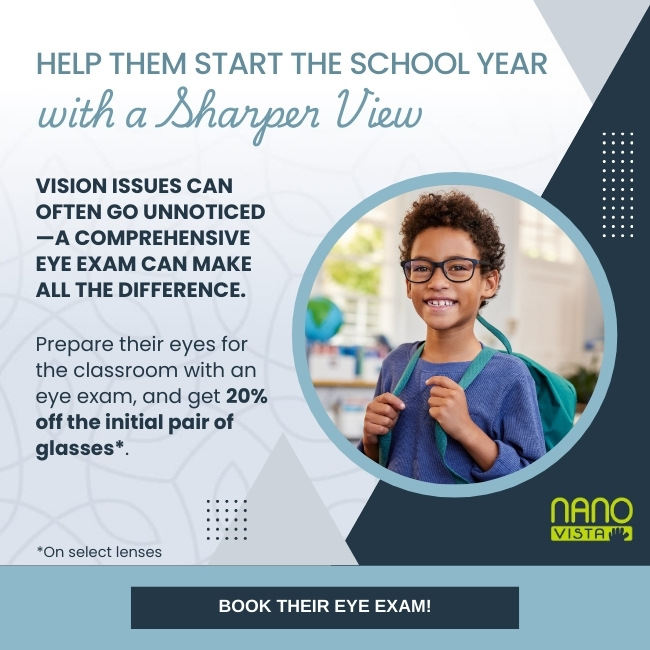Sunglasses are more than a stylish accessory; they’re an important part of your eye health toolkit. The right pair of sunglasses can protect your eyes from harmful ultraviolet (UV) rays, reduce eye strain, and enhance visual clarity. But not all sunglasses are made the same. Polarized lenses, in particular, are often an appealing choice, especially if you spend time outdoors, drive frequently, or have light sensitivity.
If you already wear sunglasses or are shopping for a new pair, you might be wondering: How can I tell if my sunglasses are polarized? Whether your goal is to cut through glare, reduce discomfort on bright days, or simply verify what you already own, we’ll walk you through everything you need to know about identifying polarized lenses.
What Does It Mean When Sunglasses Are Polarized?
Polarization is a special lens treatment designed to reduce glare. Glare happens when sunlight reflects off flat surfaces like water, snow, glass, or pavement, then enters your eye as a bright, concentrated beam.
Polarized sunglasses contain a chemical filter that blocks these horizontal light waves, allowing only useful vertical light to pass through. This helps you see more clearly, with improved colour perception and less squinting.
Polarized lenses are especially popular for:
- Driving
- Fishing or boating
- Skiing or snowboarding
- Hiking or golfing
- People with photosensitivity
Why It’s Important to Know If Your Lenses Are Polarized
It’s not always easy to tell just by looking at your sunglasses whether they’re polarized. Many non-polarized lenses are simply tinted to reduce brightness, but they don’t filter out glare in the same way. If you’ve purchased sunglasses without knowing their exact features, or if you’ve received a pair as a gift, it might be worth confirming whether or not they’re polarized.
Knowing for sure can help you:
- Get the most out of your sunglasses in bright or reflective environments
- Avoid eye strain during long periods outside
- Make informed choices when using digital screens or driving in winter conditions
- Decide whether you need an upgrade or a replacement
How to Test If Your Sunglasses Are Polarized
Luckily, there are a few easy at-home tests you can try to determine whether your lenses are polarized. These quick methods use basic tools you likely already have, such as a phone screen or a reflective surface.
1. The Reflection Test
This method works well when you’re near a glass surface, calm water, or a shiny car hood.
Steps:
- Find a reflective surface.
- Put on your sunglasses and look at the glare.
- Slowly rotate your head or the sunglasses about 90 degrees.
- Watch closely—if the glare changes intensity, dims, or disappears, your lenses are polarized.
Why it works: Since polarized lenses block horizontal light, rotating them changes how much glare they block at different angles.
2. The Screen Test
LCD and LED screens (like your phone, computer, or tablet) can also help you determine whether your lenses are polarized.
Steps:
- Hold your phone or look at a screen with your sunglasses on.
- Tilt your head slowly from side to side.
- If the screen appears to darken, change colour, or even black out at certain angles, your lenses are polarized.
Important tip: Make sure the screen brightness is set to normal, and try the test in good lighting for the best results.
3. The Double Pair Test
If you have a second pair of sunglasses that you know are polarized, you can test them together.
Steps:
- Hold the known polarized sunglasses in front of the lenses you want to test.
- Look through both pairs while holding one of them at a 90-degree angle to the other.
- If the overlapping area appears significantly darker or turns black, both pairs are polarized.
This test works on the same principle as the reflection test—when two polarized lenses are crossed, they block nearly all light.
4. Check for Labels or Packaging
This may seem obvious, but it’s always worth checking the original packaging or labels. Most manufacturers will clearly label polarized lenses as such, either on the lens itself or on a sticker. If you’re unsure or the label has worn off, the tests above could be a great option.
What If You’re Still Not Sure?
If none of these at-home tests give you a clear answer, or if you simply want professional confirmation, bring your sunglasses to us! We have the tools to verify whether your lenses are polarized and can help you decide if they’re the right fit for your vision needs.
A Note of Caution: Polarized Does not Equal UV Protection
One common misconception is that polarized lenses automatically offer UV protection. But that’s not always the case. Polarization only addresses glare, while UV protection is a separate feature that filters out harmful ultraviolet rays.
When choosing sunglasses, make sure they offer 100% UVA and UVB protection. Many credible polarized lenses do include UV protection, but it’s always worth verifying.

Find Your Perfect Pair at Doctors EyeCare Grande Prairie
At Doctors EyeCare Grande Prairie, we believe your sunglasses should do more than look good—they should actively protect your eyes and improve your everyday comfort. Whether you’re shopping for prescription polarized lenses, sport-specific sunglasses, or stylish everyday frames, our team is here to help.
We’ll guide you through lens options, frame styles, and protective features so you can leave with eyewear that matches your lifestyle and supports your long-term eye health.Book an appointment or stop by today; we’d love to help you see the world more clearly and comfortably.




